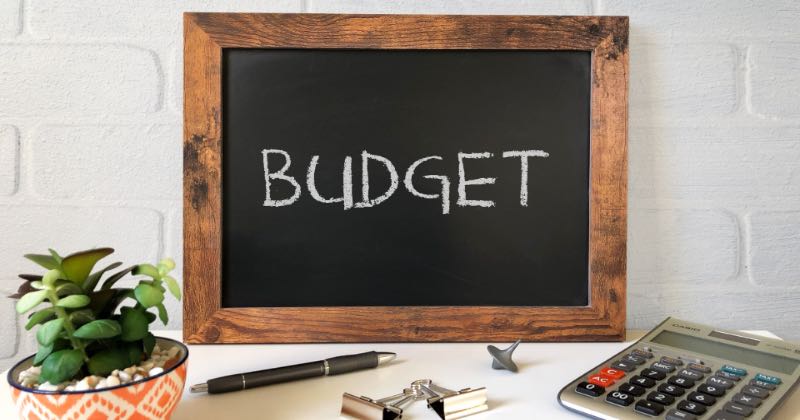Unlocking the Secret to Maximizing Your Money
Taking Charge of Your Finances with the 50/30/20 Budget Rule

In fact, managing your finances doesn’t have to be difficult or time-consuming. Ever since the introduction of the 50/30/20 budget rule, there have been fewer excuses for not managing your money effectively.
If you’re not familiar with this rule or unsure how to implement it, you’re in the right place. In this article, we’ll walk you through everything you need to know about the 50/30/20 budgeting method!
What Is the 50/30/20 Budget Rule?
The numbers 50, 30, and 20 are not just random figures; when used correctly, they can help you grow your wealth significantly.
The 50/30/20 budget rule is based on a straightforward principle: categorize your expenses into broad groups. However, there’s more to it than that.
This method allocates portions of your budget to needs, wants, and savings. According to this rule, 50% of your budget should go toward essentials.
The remaining 30% is your monthly allowance for spending on non-essential items and fun activities. The remaining 20% is earmarked for savings.
For instance, you should set aside this 20% to build your emergency fund. These percentages should be calculated based on your monthly income or salary.
This budgeting approach is highly effective because it provides clear guidance on how to handle your money before you receive it.
By anticipating entertainment expenses, you can avoid the most common pitfall of many budgets. After all, at some point, you’ll want to enjoy your money. However, failing to budget for this fun could lead to difficulties in paying your other bills for that month and the months ahead.
So, what expenses fall under the “needs” category, and what exactly constitutes “entertainment”? Let’s break it down:
50% – Needs
Half of your salary should be allocated to maintenance expenses. These include items like rent or mortgage payments, groceries, and more. Here’s a list of expenses that should fall under this category:
- Rent, mortgage, or condo fees
- Groceries
- Utility bills (water, electricity, etc.)
- Health insurance
- Transportation
- Loan repayments and credit card balances
- Childcare
It’s important to include only recurring monthly expenses in this section. Unexpected costs, such as car maintenance and home repairs, should primarily come from your emergency fund.
30% – Wants
In line with the 50/30/20 budget rule, the 30% portion is your monthly budget for fun and non-essential spending. This means you can use this percentage for things you don’t absolutely need.
For example, you can live without attending your favorite singer’s concert or dining out regularly. Some frugal savers might think, “I’d be better off putting this money into savings.”
However, having fun is also a crucial part of your social life and mental well-being. So, don’t neglect it or brush it aside.
Here’s a list of items that should fall under this category:
- Hobbies
- Dining out
- Vacations
- Gym fees for recreational sports
- Movie and concert tickets
- Monthly subscriptions for streaming, cable TV, and other leisure services
- Special event clothing (suits, party dresses)
- Non-essential services (haircuts, beauty treatments, and more)
You should question each of the expenses you place in this category. “Do I need all these streaming services?” is a good question to start with. You’ll likely find opportunities to save money without compromising your leisure time quality.
20% – Savings
Do you know what to do with the remaining 20% of your budget? Anything you want! This is the portion you save, keeping it in an easily accessible account for emergencies. You can also use some of it to start investing for your retirement.
After establishing your emergency fund, you can explore various assets for investment.
How to Implement the 50/30/20 Budget Rule

Here’s a straightforward step-by-step guide to incorporating the 50/30/20 budget rule into your financial planning:
- Calculate Your Monthly Income: Add up all your monthly earnings, including your salary, profits, government assistance, and more.
- Determine Your Spending Limit: Calculate the percentages that define your spending cap for each category on a spreadsheet or on paper. If you find it challenging to calculate percentages, follow these steps:
- Multiply your total income by 0.5 and note that amount.
- Then, multiply your total income again by 0.3 and 0.2 separately. Record these two values. These figures represent the ceiling for each spending category.
- Set Your Expenses: Now, set your expenses for each category for the upcoming month, adhering to the defined limits.
- Monitor Your Budget: Review your budget before each month begins and make necessary adjustments to stay within your spending limits as much as possible.
Indeed, it becomes much easier to keep track of your finances when you can describe them before each month starts.
Is the 50/30/20 Budget Rule the Best Choice for Your Finances?

The 50/30/20 budget rule is, in fact, one of the simplest ways to manage spending effectively. Besides helping you stay on top of your bills, it can also serve as a foundation for making money-related decisions.
You might come across a fantastic deal, but if it deviates from the 50/30/20 framework, it might not be worth it. However, this method has limitations that may not suit individuals with certain income levels.
High-income individuals may not benefit significantly from this model, while those with low incomes, especially those at or below the minimum wage, may struggle to adhere to this rule.
In such cases, essential expenses may exceed 50% of their income. If you find yourself in this situation, it’s advisable to save at least 20% or 10% of your earnings using an automated savings deposit option.
If you’re looking to enhance your budgeting skills, learn more about this topic and discover additional savings tips in the following article.









